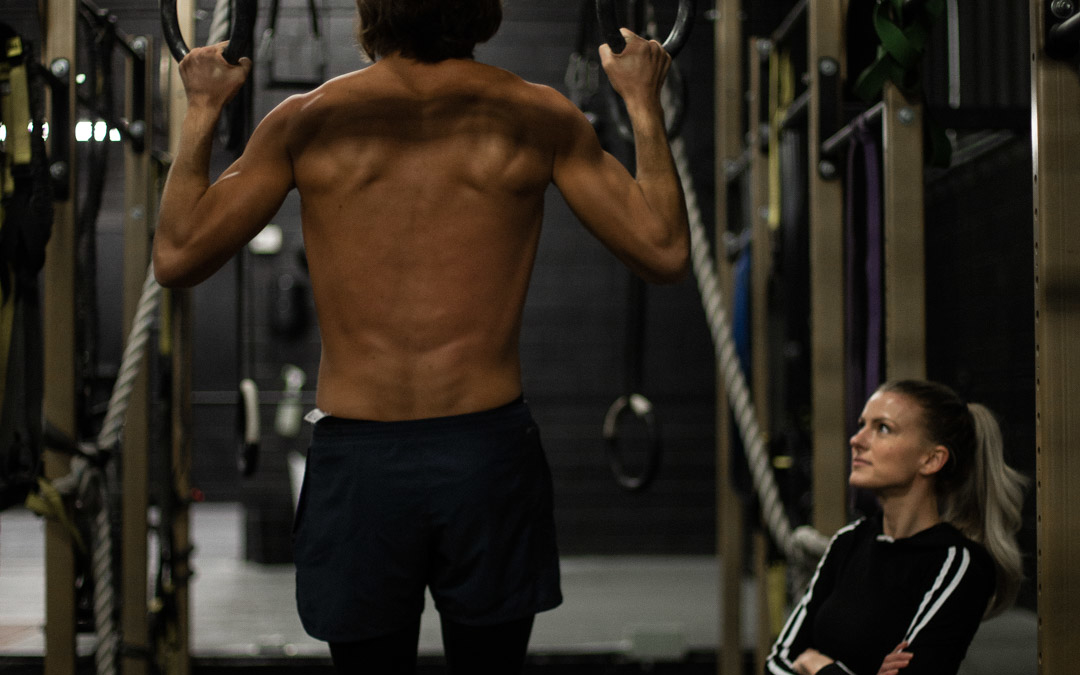
Cutting Fat Without Losing Muscle
If you’ve been watching some of our other videos, you’ll already know that losing muscle can often happen when you’re in a cutting phase, especially if you’re not strategic or disciplined during your cut. While cutting, your focus should be on retaining AS MUCH muscle as possible – you’re not going to want lose all your muscle and be “skinny fat”. Working with a personal trainer can definitely help with program design to make sure this isn’t the case. You should also be sure to track your body composition so that you can assess your progress each week.
So how do you do this? How do you cut strategically to maximize muscular retention? We’re going to provide you with a few tactics here that will help you maximize muscle retention during your cutting phases.
First – focus on eating a HIGH PROTEIN diet. High protein diets beat low protein diets in every way when cutting. We’ll probably film out a video in the future to go over this in greater detail, but here’s what you need to know for now. You’re going to aim for 1 to 1.25 grams of protein per bodyweight per day – so if you’re a 180 pound male, you’re going to aim for 180 to 225 grams of protein per day. We highly recommend getting your protein from lean sources such as egg whites, chicken breast, etc. The less processed, the better, and if you can hit your daily intake of proteins without drinking your protein in the form of protein shakes – you’ll feel more satiated and better overall.
You know that by cutting, you’ll be in a caloric deficit – you’re consuming less calories than you’re expending. You might naturally think to cut out as many calories as possible, and maximize your caloric deficit to lose weight and fat faster, but this is a bad idea. You’re going to face radical cravings and hunger, which will probably unhinge your overall psyche and force you into overeating. You’re going to want to be aggressive, but not overly aggressive. By being overly aggressive, you’re going to run into lots of issues related to whats known as starvation dieting. We’ll get into this in another video because that’s not the focus of this video. We recommend setting your caloric deficit to about 20% – so eat 20% less calories than you consume per day maximum. Anything more than that, and you’ll probably have a lot of difficulties sustaining that diet consistently. It’s important to ensure that you’re tracking your macros to ensure that you’re setting yourself up for success.
You’re probably also thinking you should spend hours on cardio machines to maximize the deficit – but you shouldn’t. In fact, you’re probably tempted to just focus on cardio entirely if you want to be lean, but you shouldn’t. Cardio is NOT going to trigger muscle building, so although you can lose weight and fat with cardio, it is definitely the less effective way to do in the long-term. That’s not to say that you shouldn’t do cardio, because you should for fat loss and for heart health purposes, but that you shouldn’t ONLY do cardio. You should focus on heavy, compound weightlifting (including squats, deadlifts, etc), because this is the most effective way to trigger muscle growth and strength, which allows you to progress faster and build out your ideal physique. I can’t stress this enough – do not avoid weights if you want to look lean and strong. This advice holds true for men and women, and I’ve mentioned this a few times already but once again, women, you don’t need to worry about building masculine physiques by weight lifting. In the majority of cases, your personal trainer will integrate weight training and compound lifts into the majority of your training regimen as it is proven to get you results. All aspects of your program will be carefully calculated including your rest periods in between sets.
Last thing I want to quickly mention is cardio – for your cardio, focus on High Intensity Interval Training (HIIT) to maximize fat loss. It’s much more effective than slow, low intensity steady state (LISS) cardio, especially when it comes to fat loss. We’ll talk more about HIIT in other videos, but it’s essentially cycling short bouts of maximum effort with short rest periods. HIIT helps you preserve muscle much more than LISS cardio.
If you have any questions about any of our personal training programs or anything discussed in this article, you can leave us a comment below or email us at contact@fithaus.io. If you’re interested in setting up a complimentary assessment with one of our highly qualified personal trainers, feel free to email us at contact@fithaus.io, call us at 1-888-682-0724 or visit our homepage!
That’s all for today guys, hope you found that helpful. Stay tuned.
